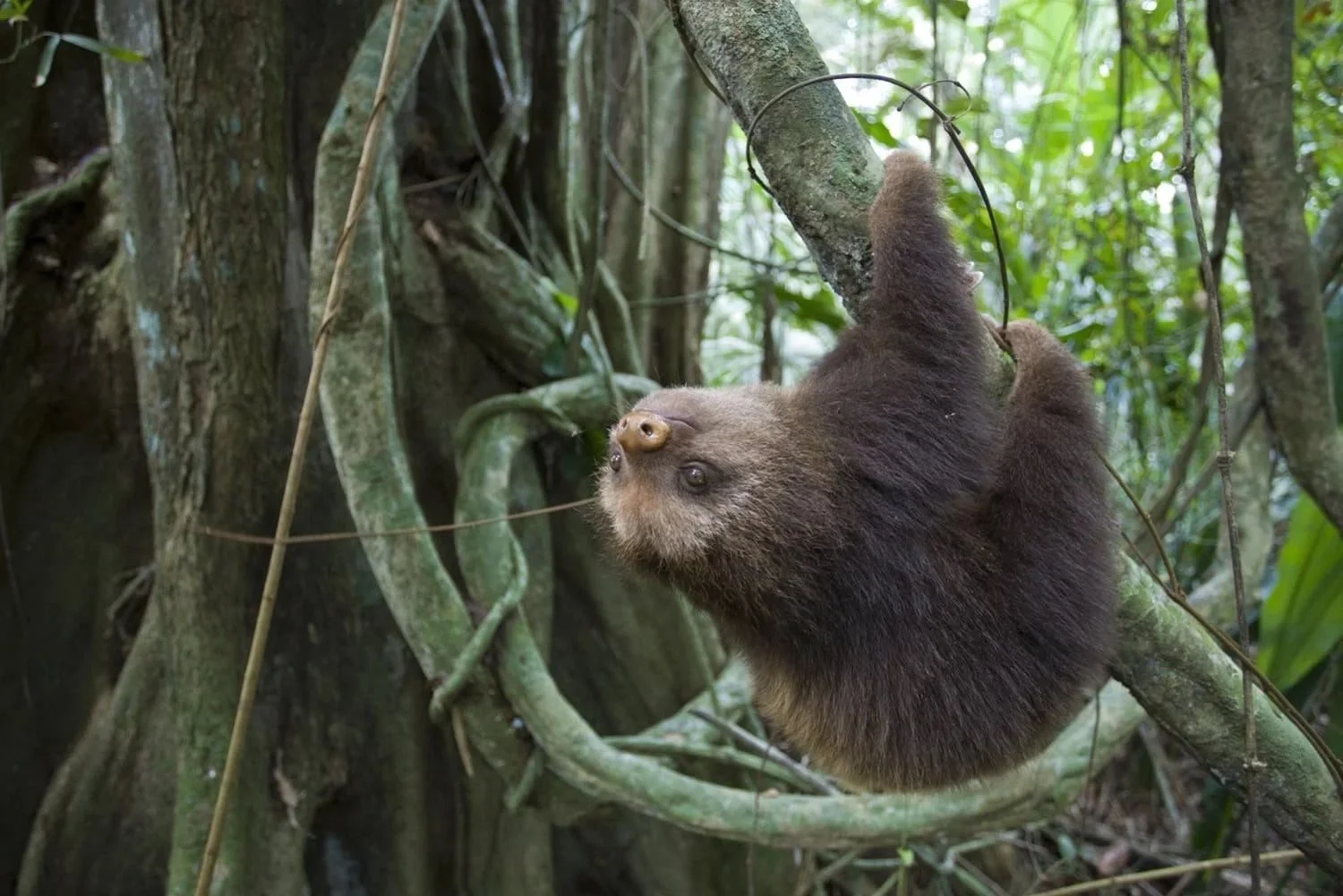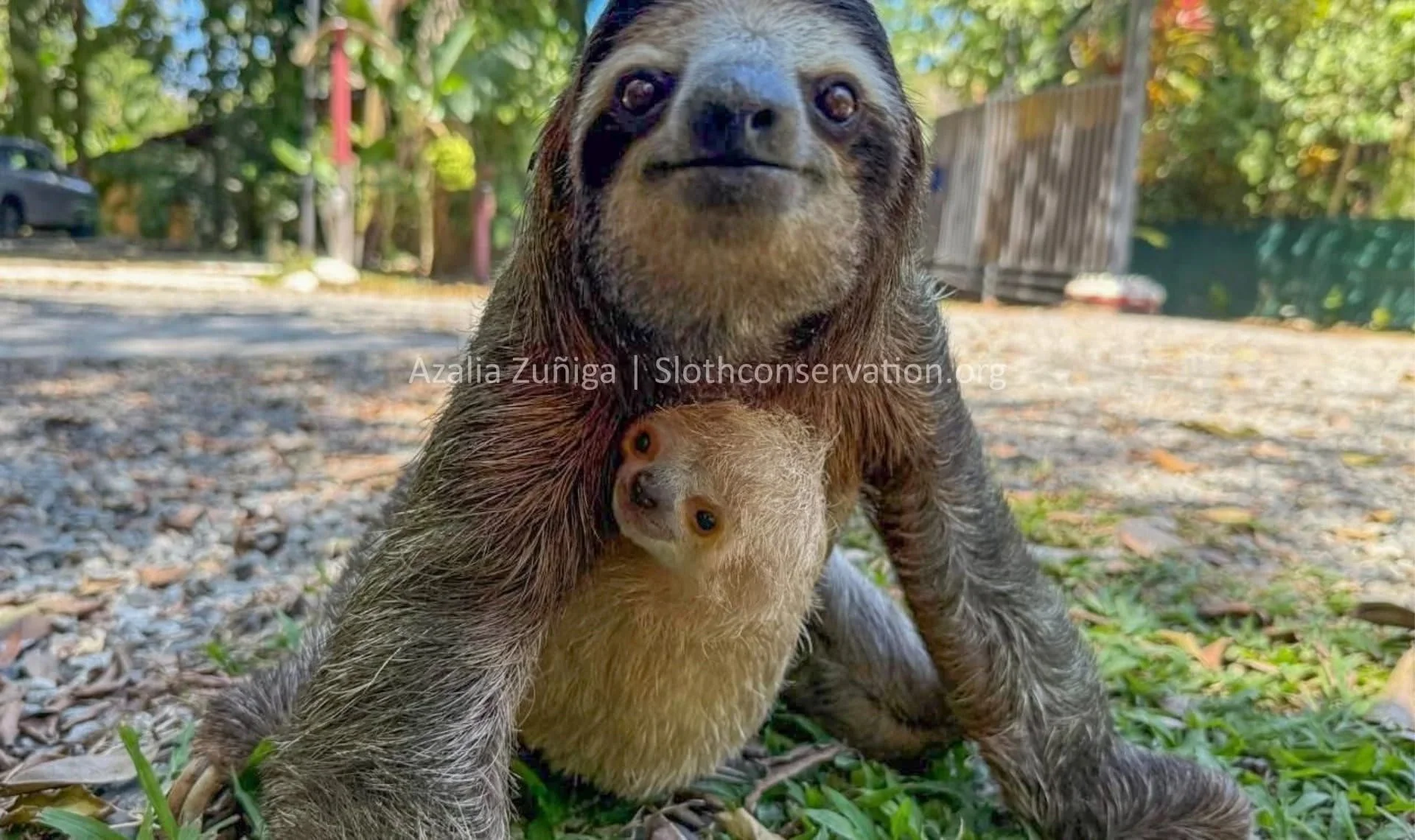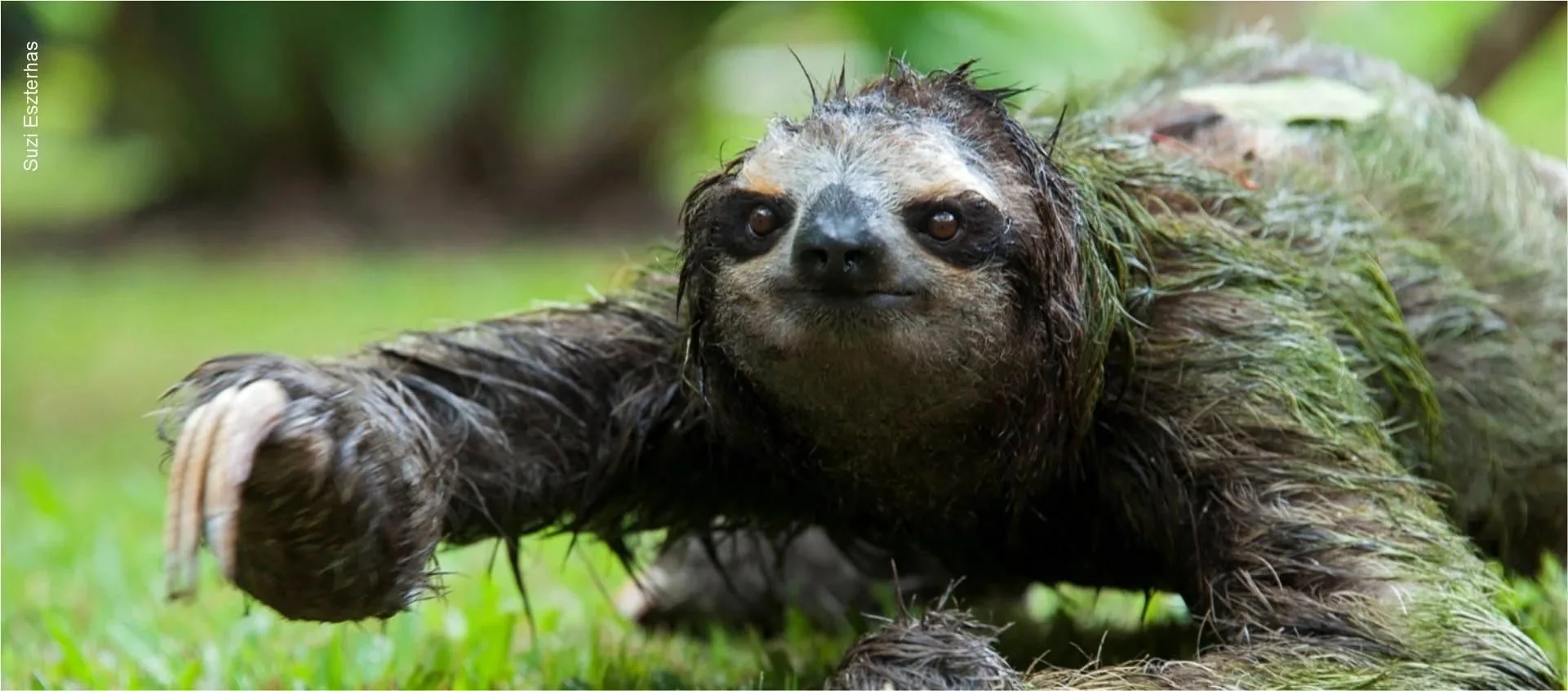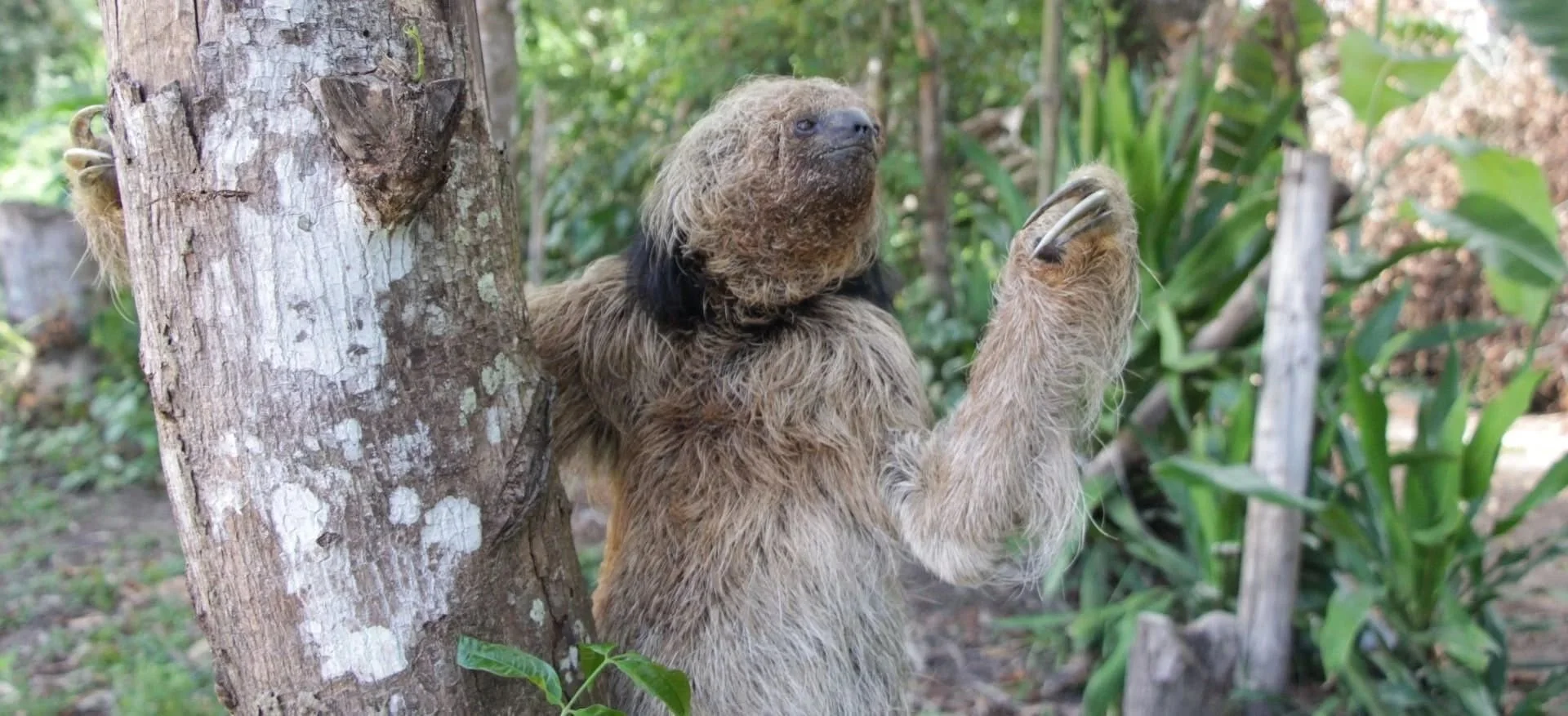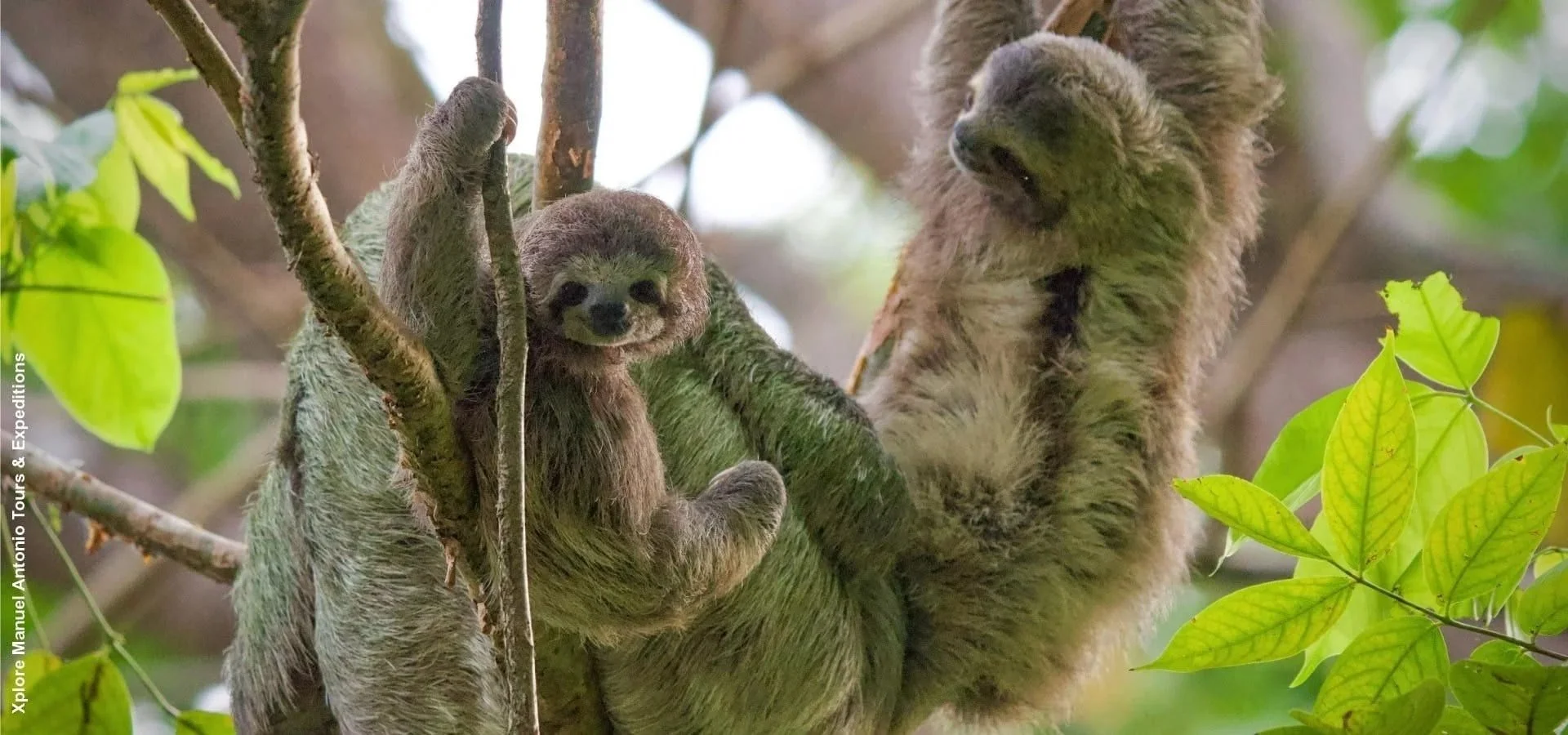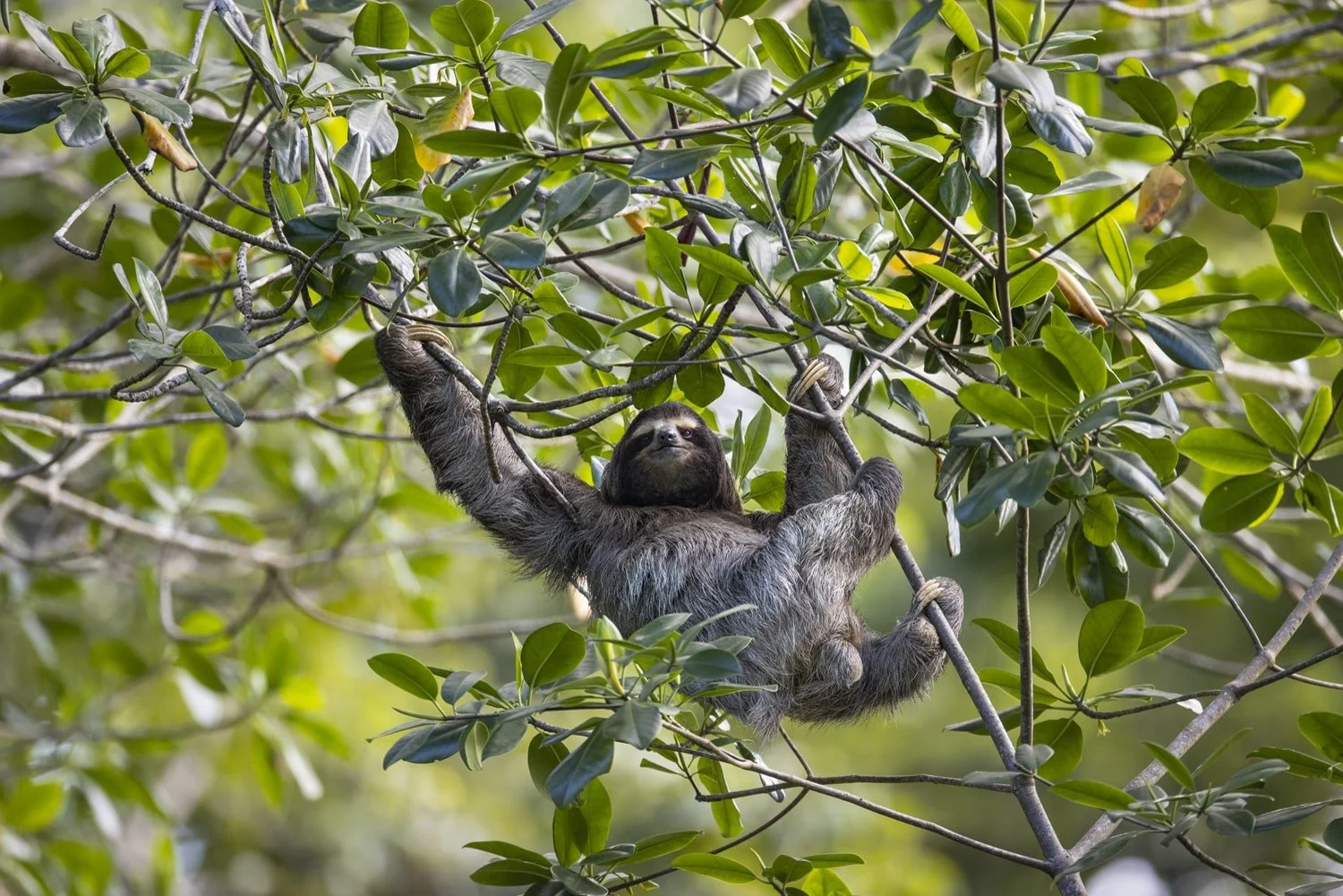

Our Work: Sloth Science & Research
We are committed to advancing knowledge through high-quality research.
Our studies are published in open-access, peer-reviewed journals, ensuring that our findings are accessible to the global scientific community and beyond. We proudly collaborate with leading universities around the world, including the University of Manchester, Brown University, and Swansea University, to deepen our understanding of sloth biology, ecology, and conservation.
Published Research
Trying to count sloths in a rainforest is quite hard: they move slowly, blend perfectly with the leaves, and spend their days tucked high in the canopy. But now, technology is giving conservationists and researchers a powerful new ally: drones that can see heat.
Vanderhoeven, E.A., Florida, M., Cliffe, R.N., Guzmán, J., Notarnicola, J. and Kartzinel, T.R., 2025. Host specificity of gastrointestinal parasites in free-ranging sloths from Costa Rica. PeerJ, 13, p.e19408.
Cliffe, R.N., Ewart, H.E., Scantlebury, D.M., Kennedy, S., Avey-Arroyo, J., Mindich, D. and Wilson, R.P., 2024. Sloth metabolism may make survival untenable under climate change scenarios. PeerJ, 12, p.e18168.
Cliffe, R.N., Haupt, R.J., Kennedy, S., Felton, C., Williams, H.J., Avey-Arroyo, J. and Wilson, R., 2023. The behaviour and activity budgets of two sympatric sloths; Bradypus variegatus and Choloepus hoffmanni. PeerJ, 11, p.e15430.
Cliffe, R.N., Robinson, C.V., Whittaker, B.A., Kennedy, S.J., Avey‐Arroyo, J.A., Consuegra, S. and Wilson, R.P., 2020. Genetic divergence and evidence of human‐mediated translocation of two‐fingered sloths (Choloepus hoffmanni) in Costa Rica. Evolutionary Applications, 13(9), pp.2439-2448.
Cliffe, R.N. and Haupt, R.J., 2018. Hanging out for a drink. Frontiers in Ecology & the Environment, 16(8).
Cliffe, R.N., Scantlebury, D.M., Kennedy, S.J., Avey-Arroyo, J., Mindich, D. and Wilson, R.P., 2018. The metabolic response of the Bradypus sloth to temperature. PeerJ, 6, p.e5600.
Cliffe, R.N., Haupt, R.J., Avey-Arroyo, J.A. and Wilson, R.P., 2015. Sloths like it hot: ambient temperature modulates food intake in the brown-throated sloth (Bradypus variegatus). PeerJ, 3, p.e875.
Cliffe, R.N., Avey-Arroyo, J.A., Arroyo, F.J., Holton, M.D. and Wilson, R.P., 2014. Mitigating the squash effect: sloths breathe easily upside down. Biology Letters, 10(4), p.20140172.


Research updates
Vanderhoeven, E.A., Florida, M., Cliffe, R.N., Guzmán, J., Notarnicola, J. and Kartzinel, T.R., 2025. Host specificity of gastrointestinal parasites in free-ranging sloths from Costa Rica. PeerJ, 13, p.e19408.
Last week, something truly extraordinary happened in the South Caribbean of Costa Rica: a three-fingered sloth baby with leucism was spotted! This is the first case ever recorded of its kind.
Contrary to the news reports, the virus in question, referred to as a “sloth virus,” is not exclusive to sloths.
Sloths are divided into two large groups: Bradypus, the three-fingered sloths that include the famous smiley and masked-face sloths, and Choloepus, the brownish ones with a pig-like nose and two fingers on each hand.
Occasionally, sloths have been known to give birth to twins. Since there is only enough room on the female’s chest for one baby, and the sloth’s very slow metabolism only provides enough resources for one, the weakest twin will usually be rejected and abandoned.
Cliffe, R.N., Haupt, R.J., Kennedy, S., Felton, C., Williams, H.J., Avey-Arroyo, J. and Wilson, R., 2023. The behaviour and activity budgets of two sympatric sloths; Bradypus variegatus and Choloepus hoffmanni. PeerJ, 11, p.e15430.
Earlier this year, Jenny Berla and her family vacationed in Manuel Antonio, Costa Rica, where they witnessed an uncommon event – a sloth giving birth on the ground! Sloth births typically occur in trees, making this sighting particularly remarkable.
Sloths are folivores.A folivore is an animal that specializes in eating leaves. From the Latin folium meaning “leaf” (same root word as foliage) and the suffix -vore, meaning “to eat” or “to devour”, it refers to any animal that exclusively or primarily eats leaves.
Forests are areas of land covered with trees. “Forest” is a very broad term that encompasses many different types of ecosystems, varying degrees of tree density, tree type, and land management. The first fern-like trees appeared on Earth about 380 million years ago, and today forests are the dominant land-based ecosystem on the planet, with 45% of all forests on Earth being found in the tropics.
A parasite is an organism that lives in or on a host and benefits by deriving nutrients at said host’s expense. A parasite differs from a symbiote in that a symbiote offers some benefit to the host in exchange.



